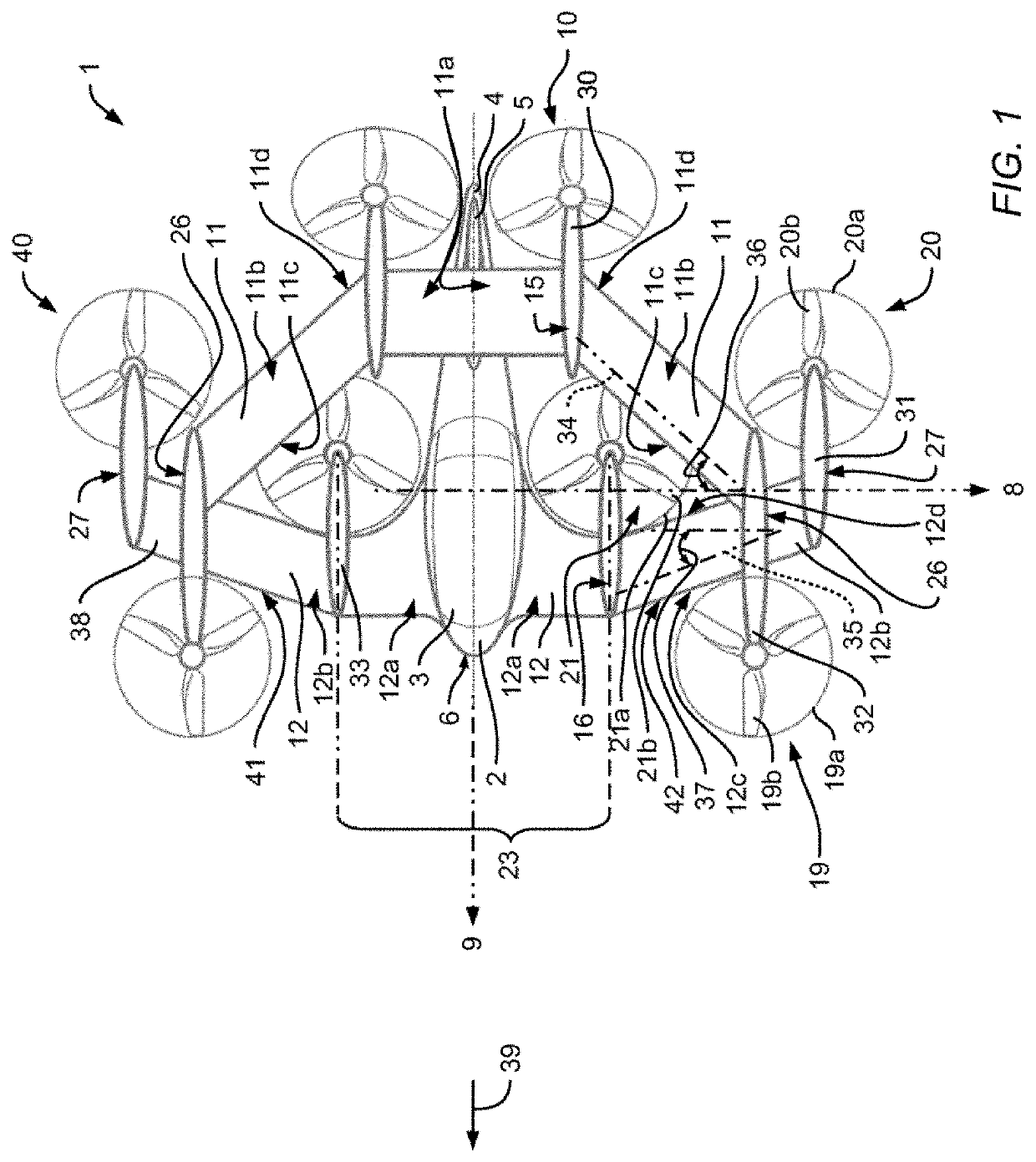Multirotor joined-wing aircraft with vtol capabilities
a technology of joining wings and aircraft, applied in the direction of propellers, vertical landing/take-off aircraft, transportation and packaging, etc., can solve the problems of reduced structural weight efficiency, increased load levels on respective aircraft structures, and lack of safe boarding zones, so as to reduce structural weight efficiency, reduce structural efficiency, and increase load levels
- Summary
- Abstract
- Description
- Claims
- Application Information
AI Technical Summary
Benefits of technology
Problems solved by technology
Method used
Image
Examples
Embodiment Construction
[0058]FIG. 1 shows a multirotor aircraft 1 that is adapted for vertical take-off and landing and that is referred to as the “VTOL multirotor aircraft 1” hereinafter, for simplicity and clarity. A forward flight direction of the VTOL multirotor aircraft 1 is exemplarily shown by an arrow 39.
[0059]For purposes of illustration, the VTOL multirotor aircraft 1 is shown with three mutually orthogonal directions forming a three-dimensional frame of reference. A “longitudinal” direction corresponds to a respective roll axis 9 that is inherent to the VTOL multirotor aircraft 1, which is also referred to as “X-axis 9” hereinafter. Another direction, said to be “transverse”, is perpendicular to the roll axis 9 and corresponds to a respective pitch axis 8 of the VTOL multirotor aircraft 1. This transverse direction is also referred to as “Y-axis 8” hereinafter. A respective XY-plane formed by the X- and Y-axes 9, 8 is considered to be “horizontal” and corresponds to a top view plane of the VTOL...
PUM
 Login to View More
Login to View More Abstract
Description
Claims
Application Information
 Login to View More
Login to View More - R&D
- Intellectual Property
- Life Sciences
- Materials
- Tech Scout
- Unparalleled Data Quality
- Higher Quality Content
- 60% Fewer Hallucinations
Browse by: Latest US Patents, China's latest patents, Technical Efficacy Thesaurus, Application Domain, Technology Topic, Popular Technical Reports.
© 2025 PatSnap. All rights reserved.Legal|Privacy policy|Modern Slavery Act Transparency Statement|Sitemap|About US| Contact US: help@patsnap.com



